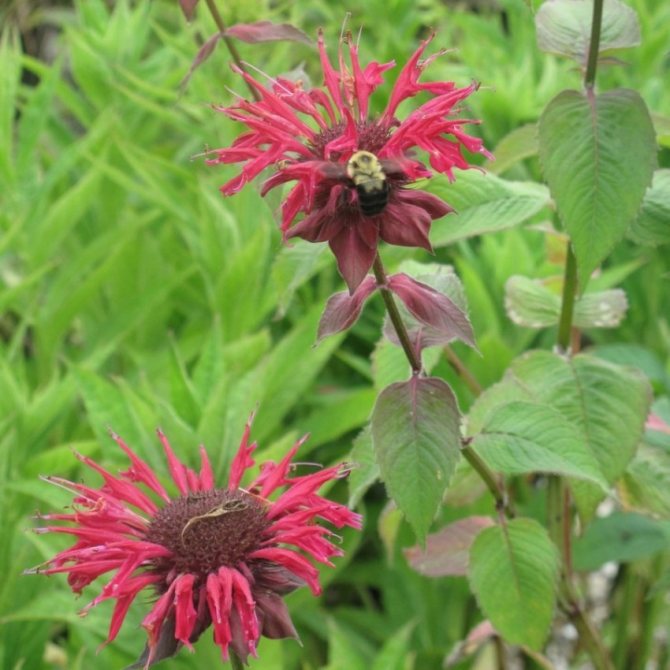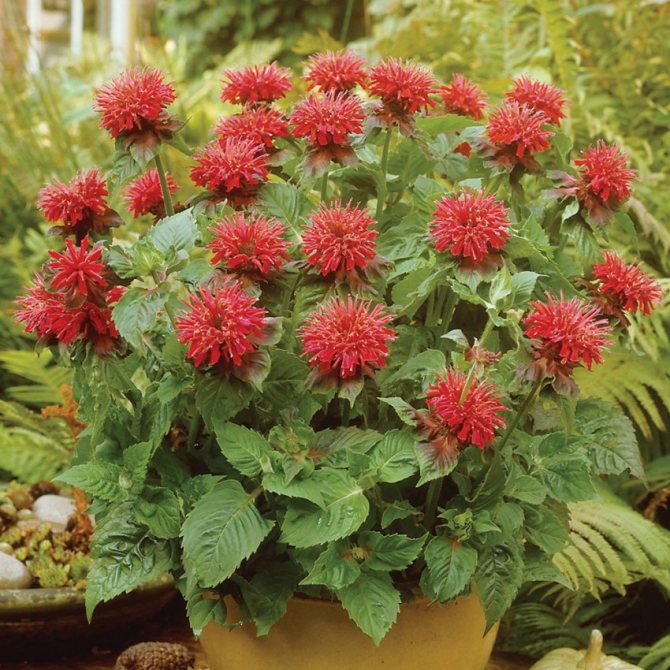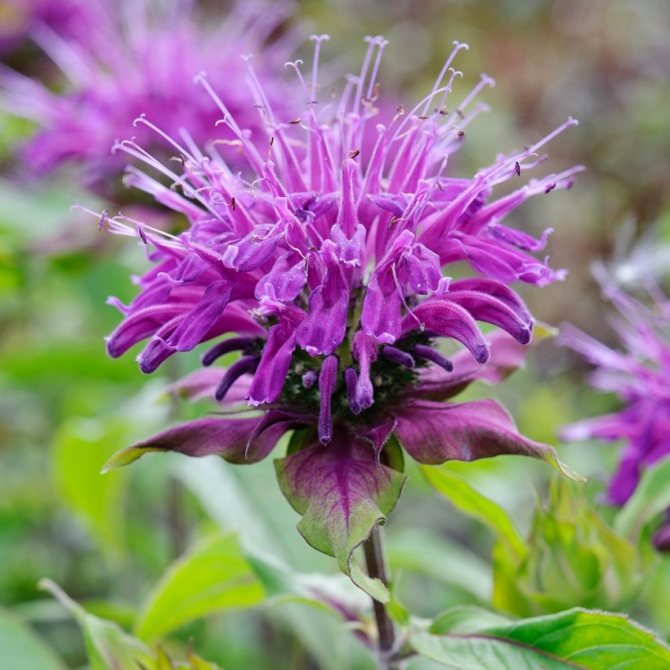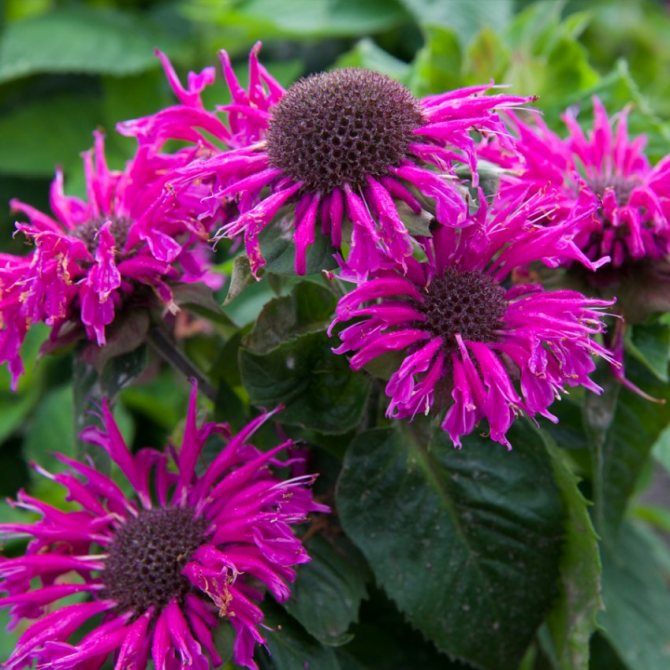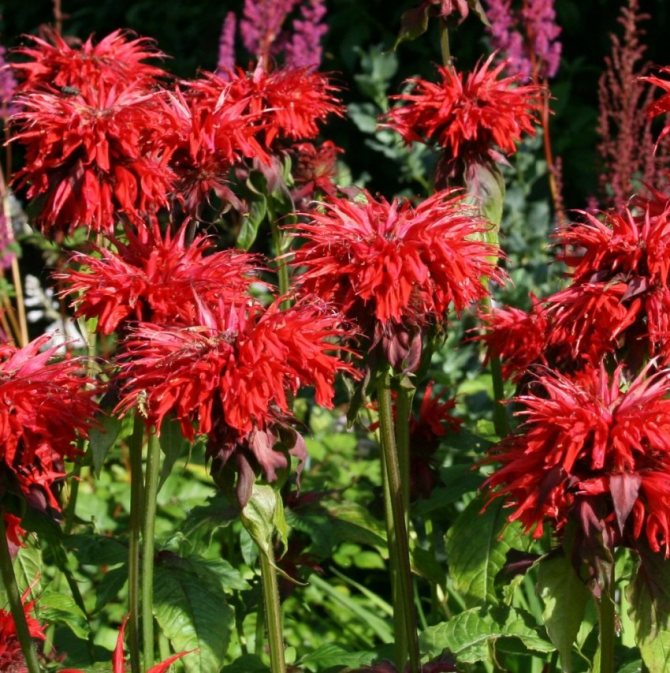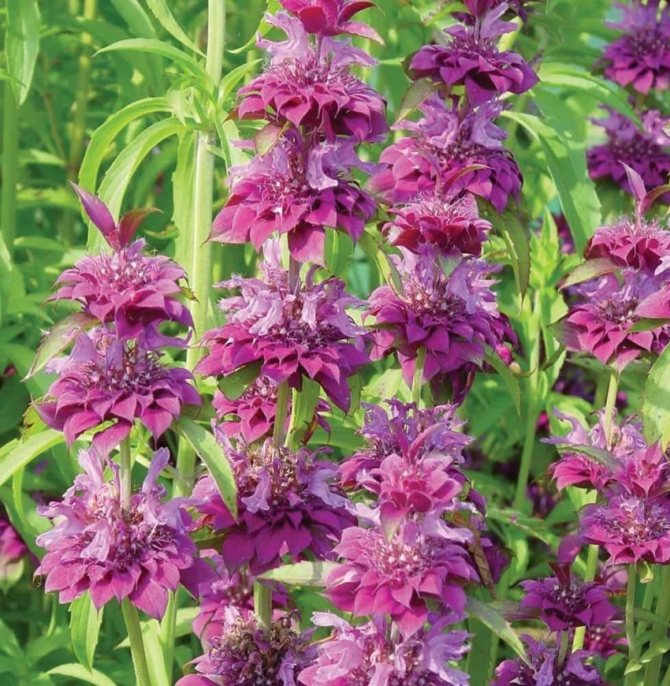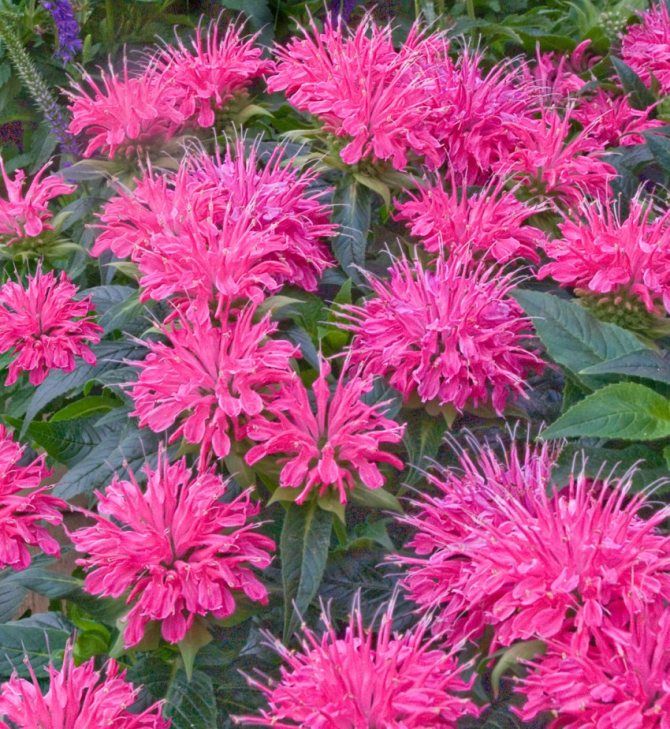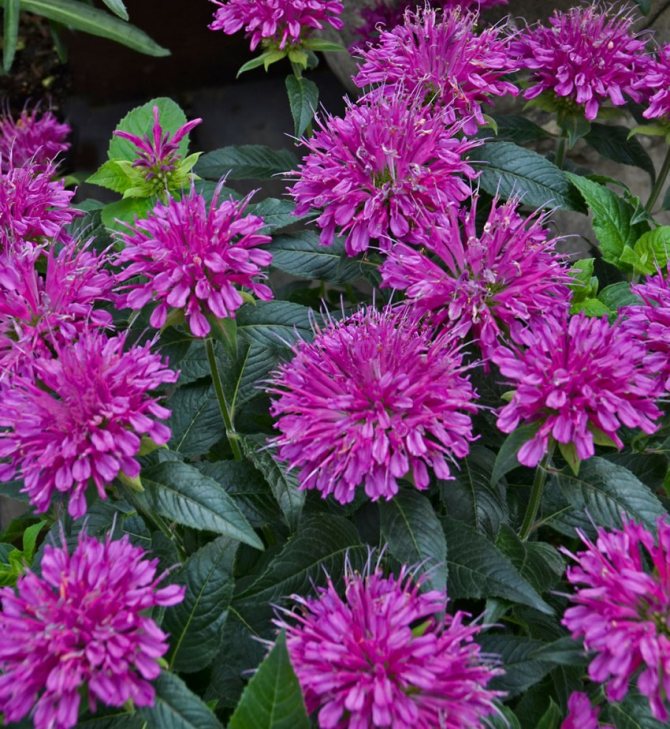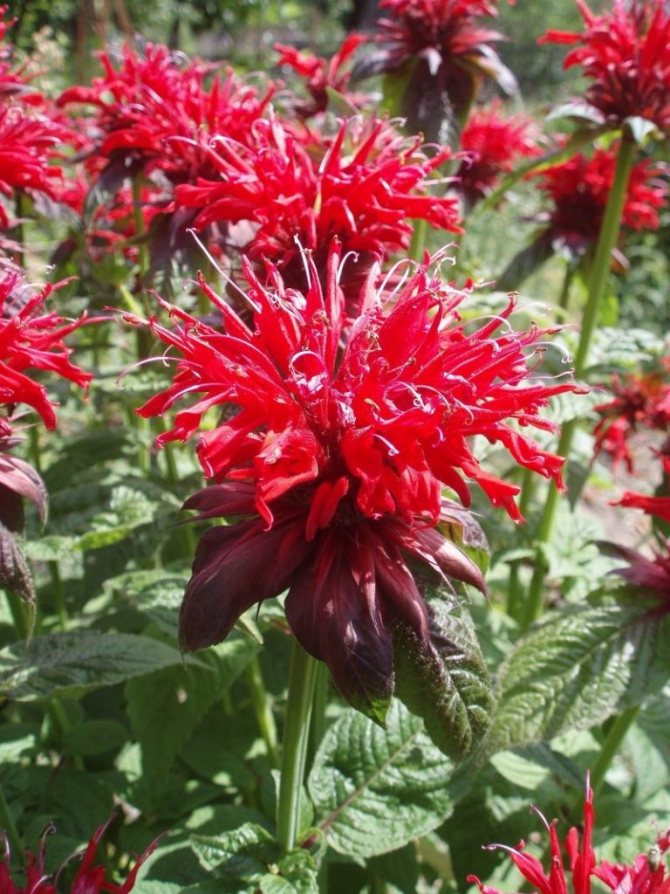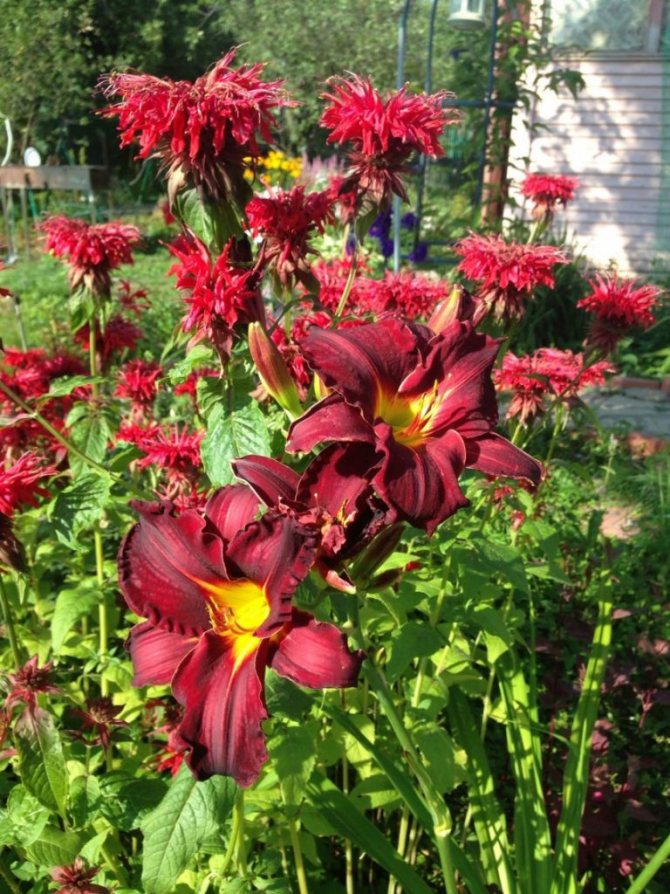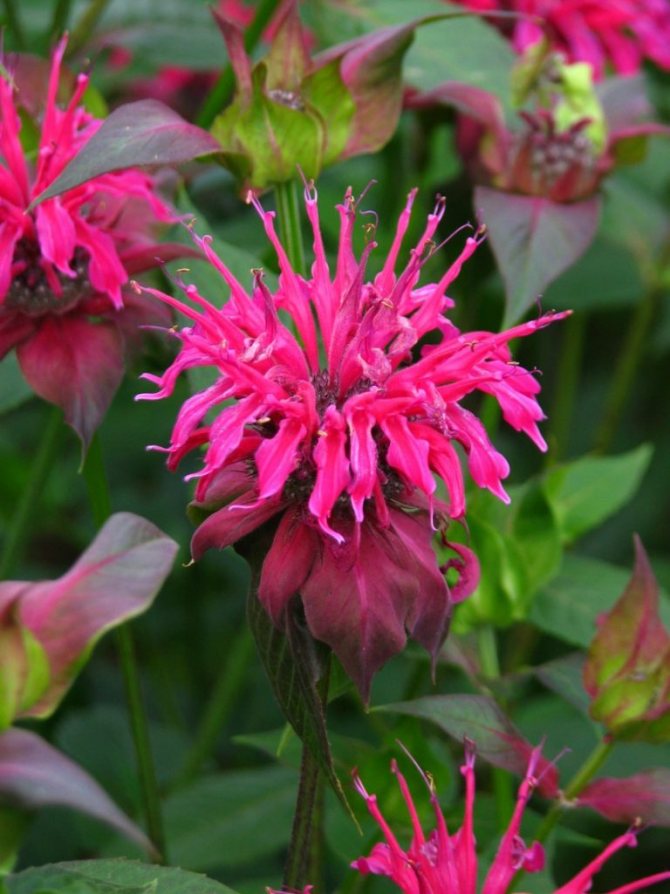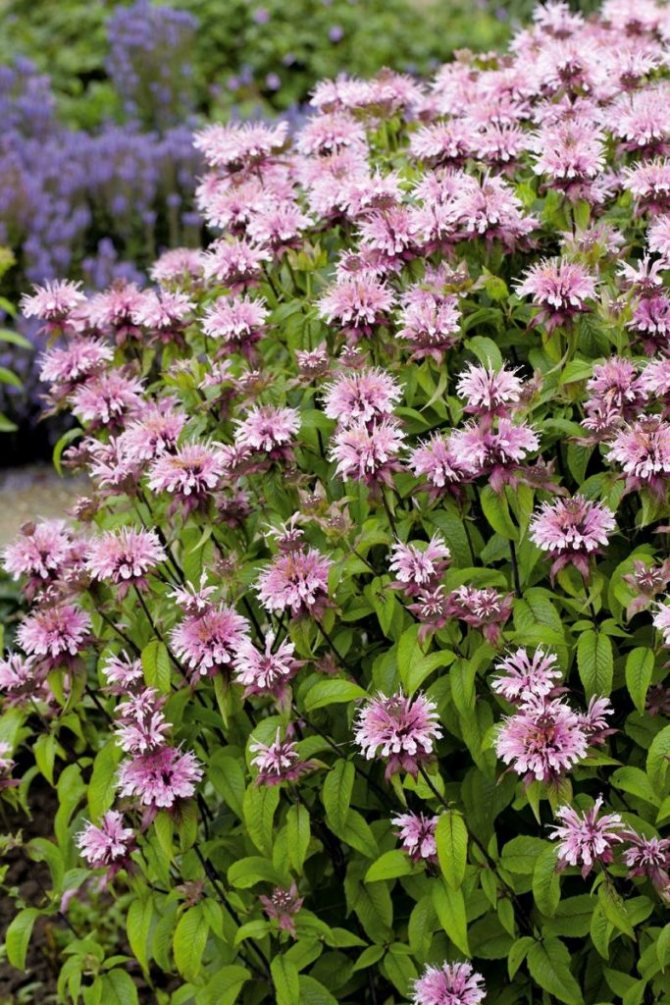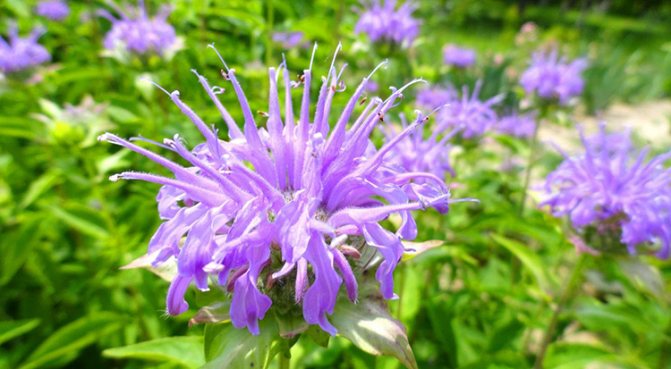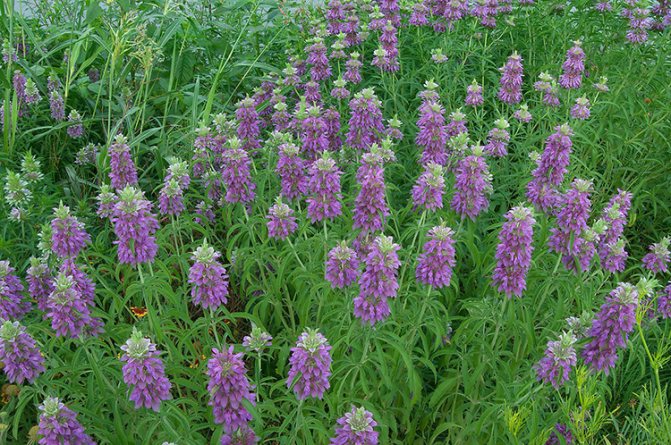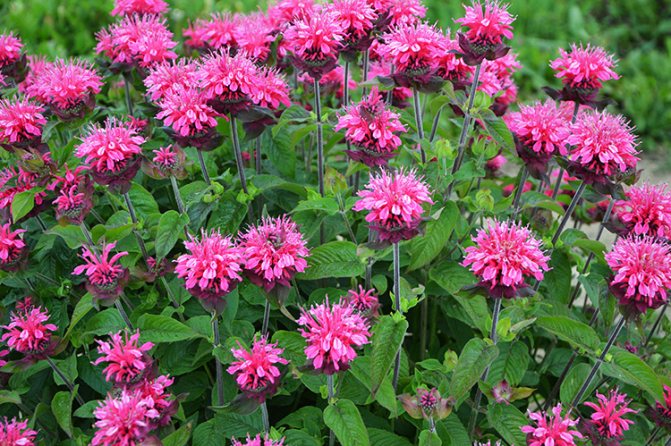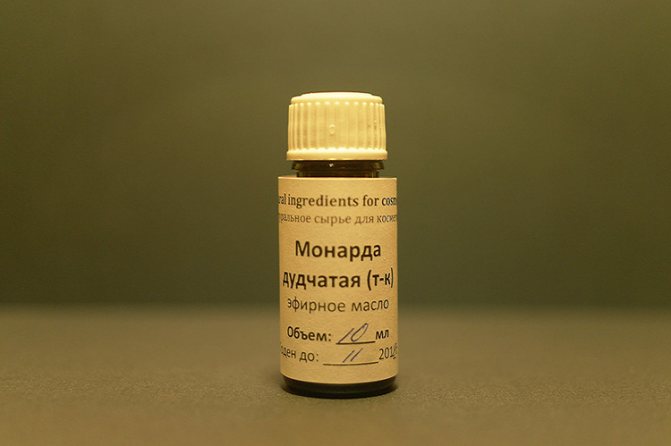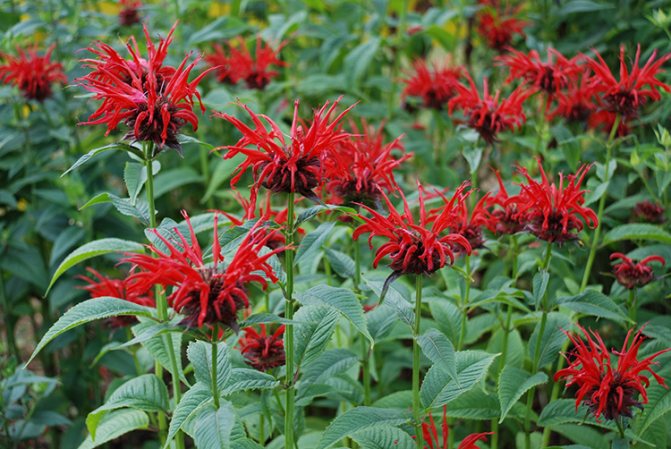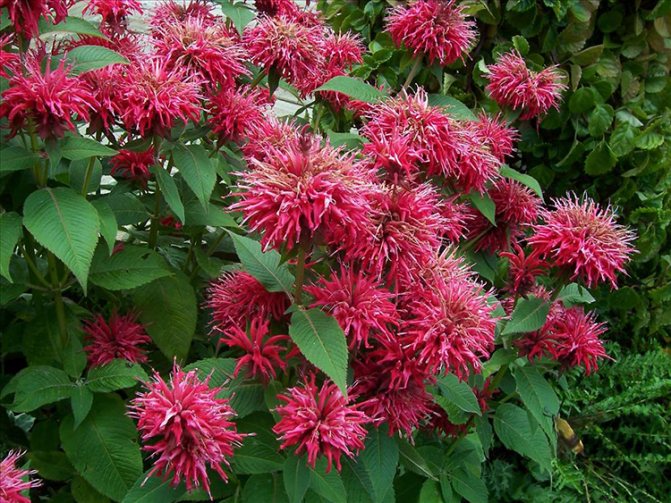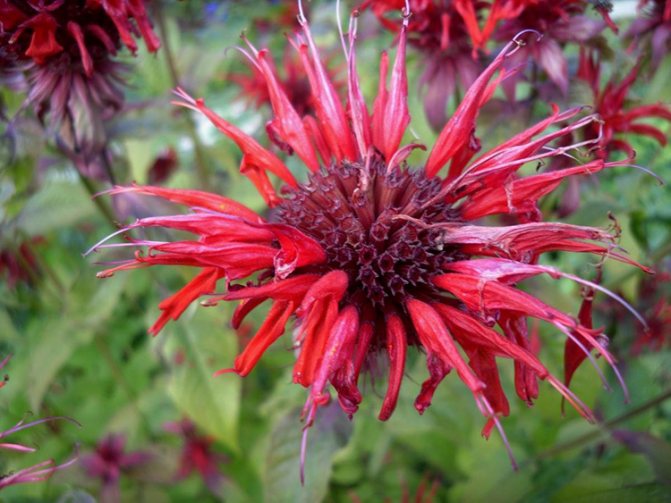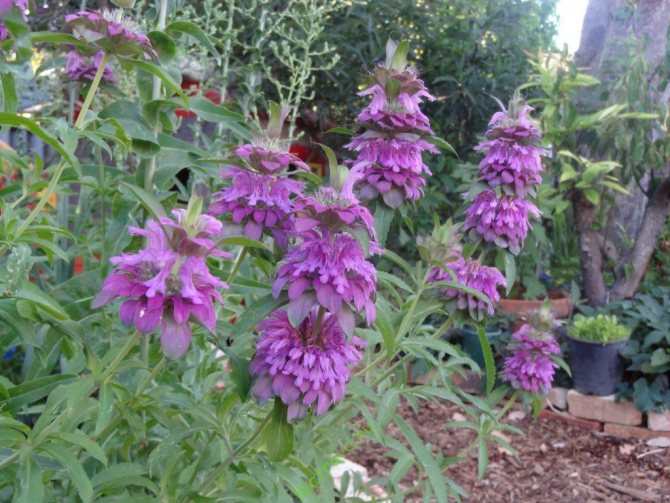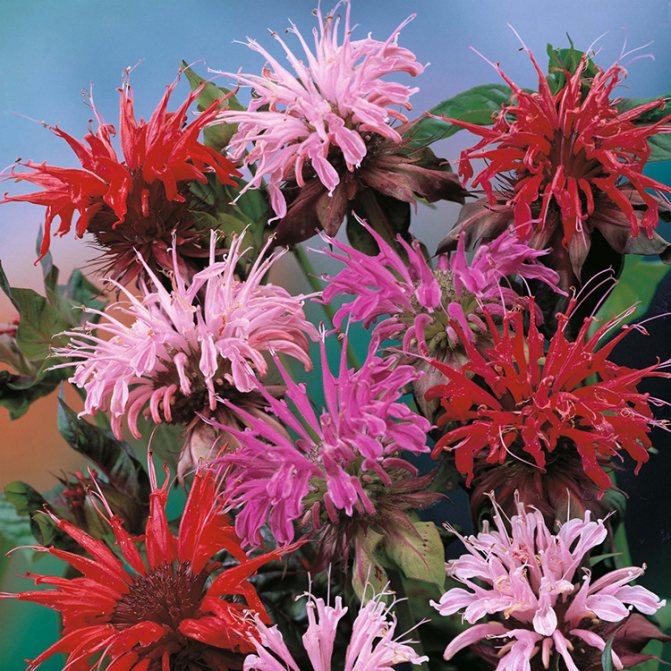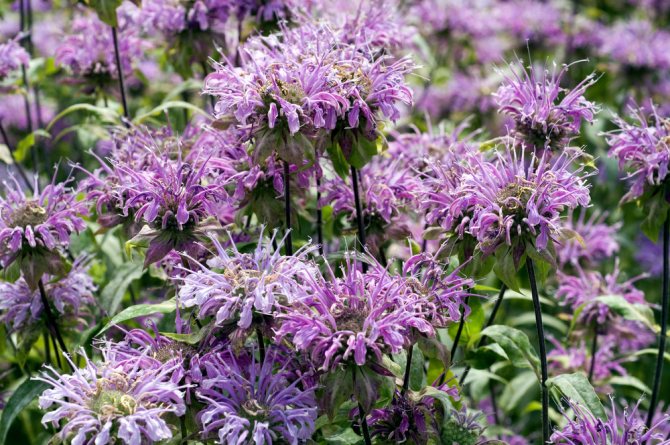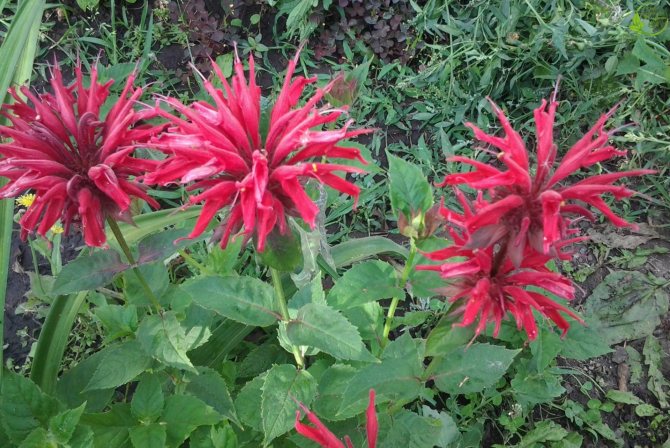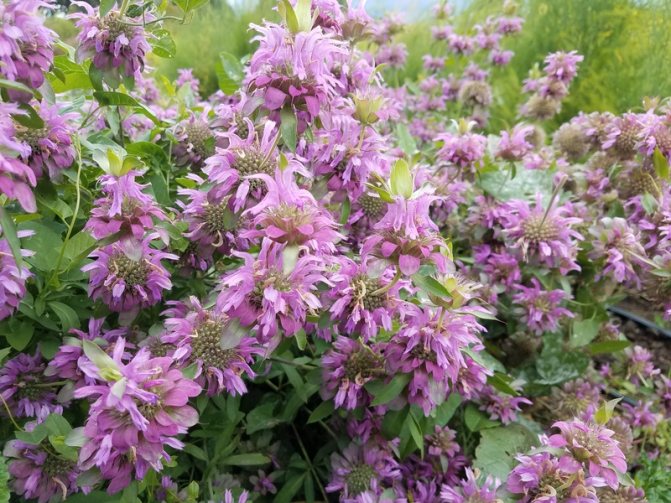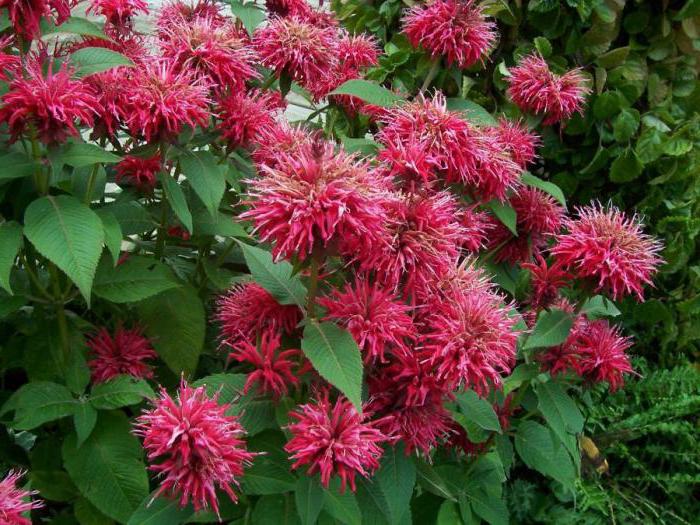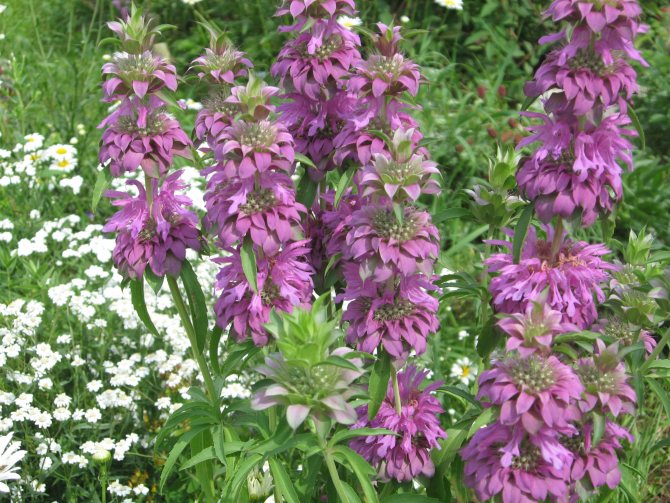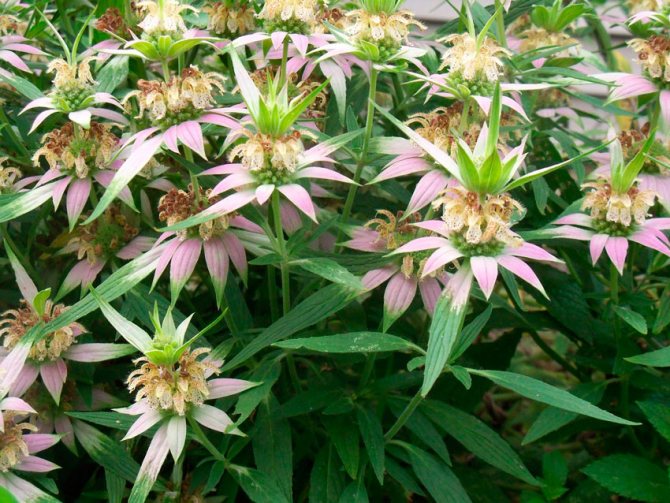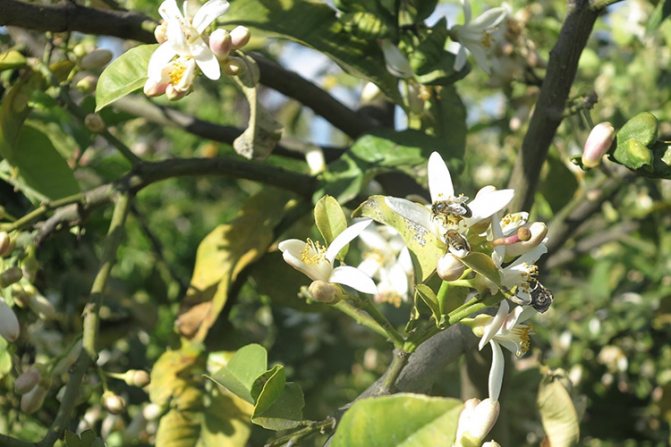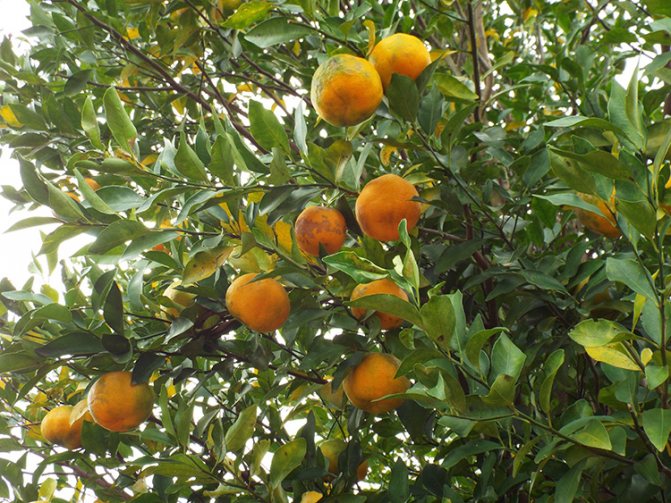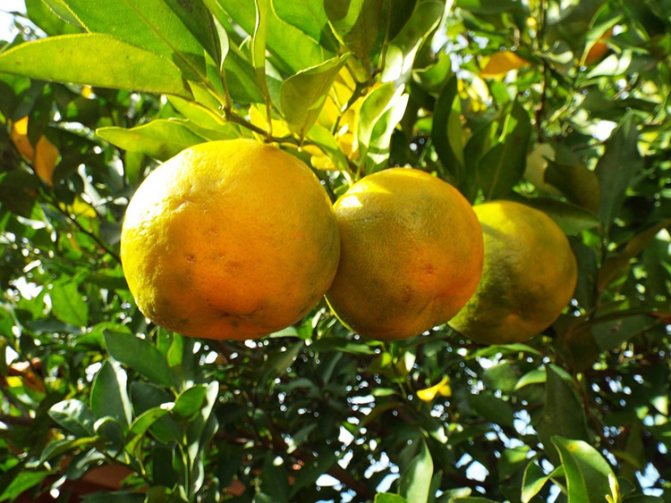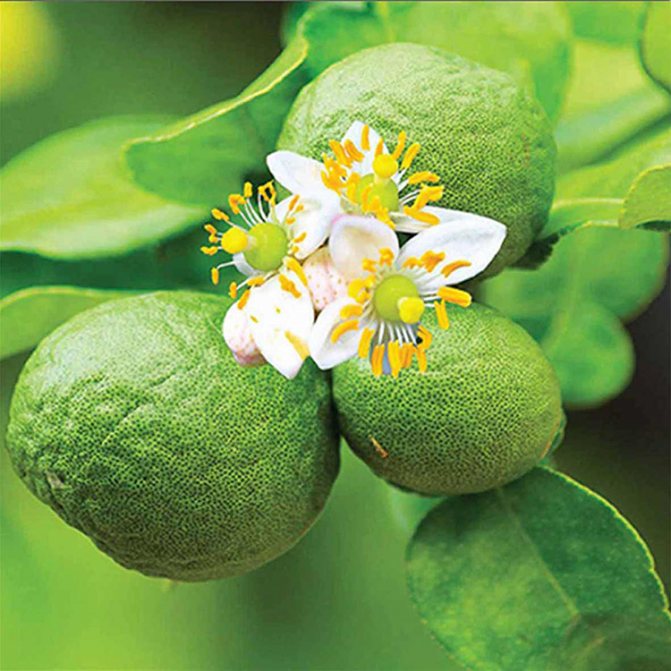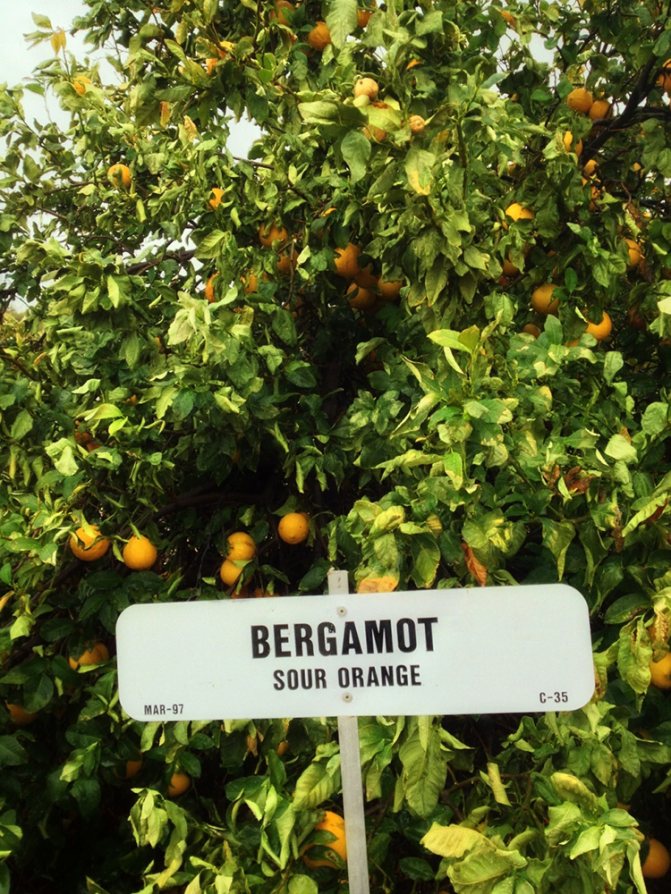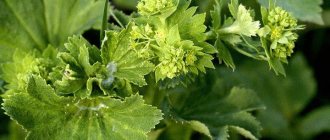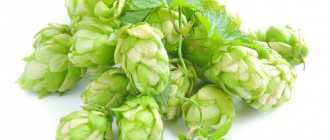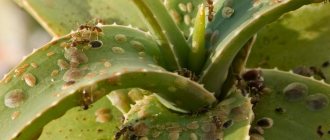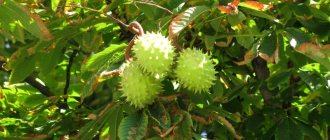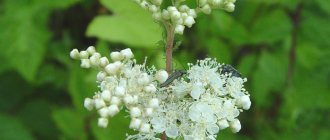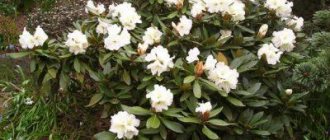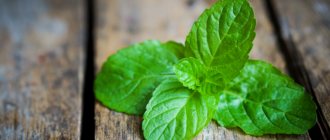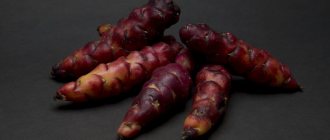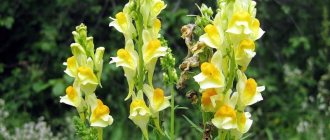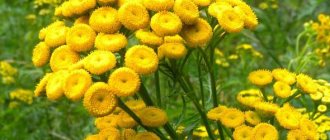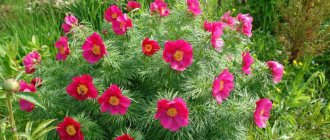The monard plant is native to North America. Now it is cultivated everywhere. Belongs to the genus Labiate (or Lamb). One-year or perennial, depending on the variety.
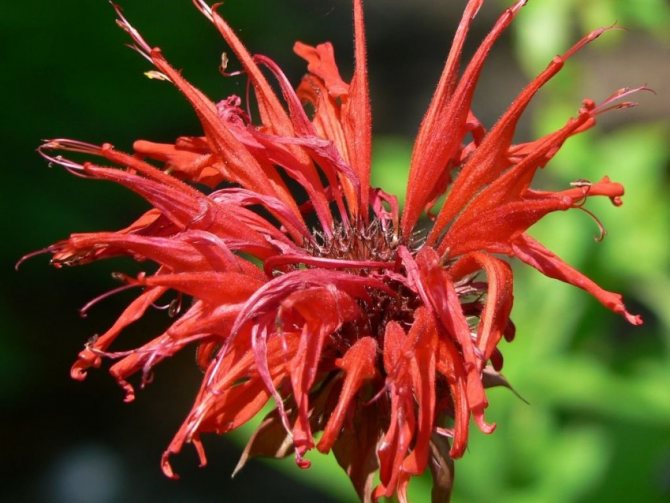
The branches grow straight up, then the maximum height is 150 cm, or they bend. In this case, the plant grows up to 90 cm. The leaf in all species is similar: straight, oblong, sharply tapering to the tip, along the edging goes with sharp small teeth. Most often lowered down.
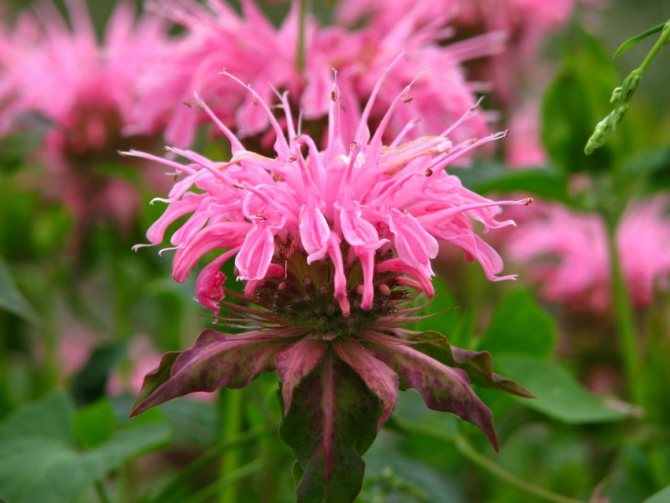

Flowers grow in inflorescences in bowls or heads. They have a diameter of 6 to 7 cm. On the stem, they are located one above the other quite close.


The fruit of the flower is a small nut. It contains seeds. Their lifespan is 3 years. That is, you can plant them three seasons later without providing special storage conditions.
The monadra develops at its maximum by the age of five. Then the bush can give up to 100 inflorescences.
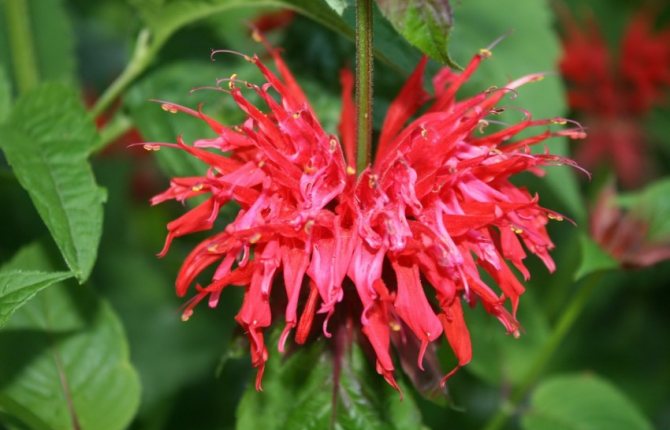

The petals are long, bifurcated at the end. According to the palette, there are flowers of all colors from white to bardo: even, with a darker gradient towards the center and even speckled. In the photo on the network, you can find a variety of monarda flowers in appearance.
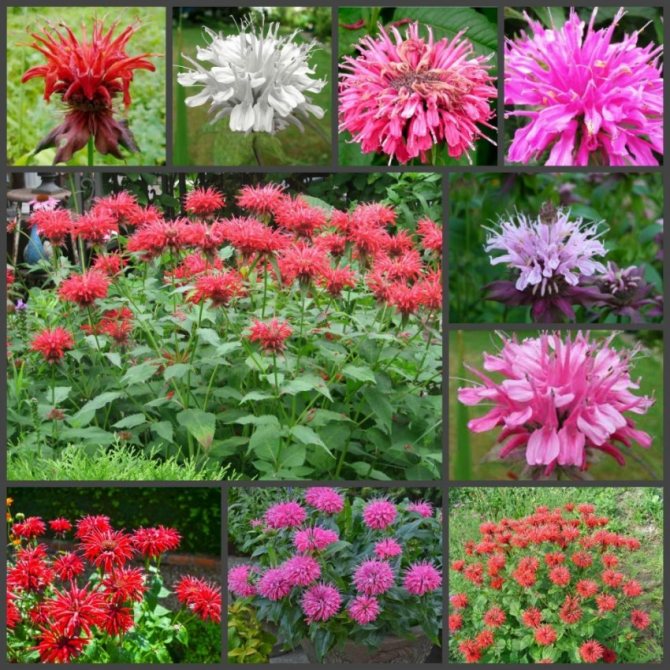

Monarda is a melliferous flower. Throughout its growth, it spreads around itself a sweetish smell that attracts insects. Interestingly, the slightly citrus scent repels pests.
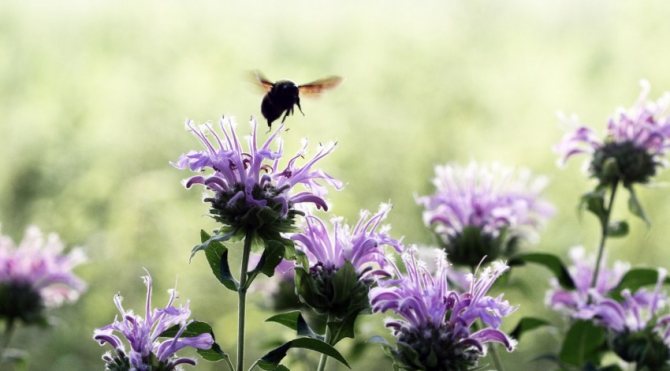

What is bergamot and what does it look like
The appearance of the plant is rather unusual. It has a dense tetrahedral stem that reaches one to one and a half meters in height. Elongated, thin leaves with pointed edges can grow up to 15 cm in length and cover the plant tightly. Monarda blooms profusely, flowers can be pink, red, purple, depending on the type of plant. Known hybrid varieties with burgundy or white flowers.
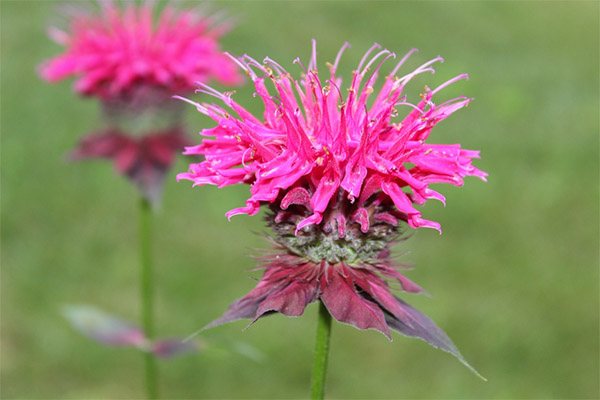

The flavor of the leaves is reminiscent of mint, but is sweeter and slightly spicier. There are several varieties of monarda, which differ not only in appearance, but also in aroma, useful properties:
- Lemon monarda has a delicate citrus aroma. The flowering of this species is very abundant, it is often grown for decorative purposes. It is used in cosmetology and perfumery. In the food industry, it is familiar as one of the components of vermouth. In medicine, tea from its leaves is used.
- The hybrid monarda better than other species helps the digestive system, and is also a strong immunomodulator. Obtained by crossing double and fist. It combines both medicinal and nutritional properties, and is often used to decorate gardens.
- Fistula contains vitamins of group B and C, which makes it an effective remedy in the treatment of many diseases. Also, it is this species that is used dried as a seasoning. It is the fistus monarda that contains the maximum, in comparison with other species, concentration of thymol, which disinfects wounds and promotes their healing.
- Double monarda is best known as a medicinal plant, decoctions and oil from which are used for colds, rheumatism, cardiovascular and other diseases. This plant is often used for decorative purposes, since this variety is tall (up to one and a half meters) and blooms beautifully abundantly.
Description and types
Monarda is a perennial plant with numerous straight stems, frayed leaves, and small lilac, violet or pink-red flowers collected at the top of the plant in the axils. Monarda has a rich spicy aroma, reminiscent of thyme with citrus notes.
The most common are four varieties of the plant, each of which has medicinal properties:
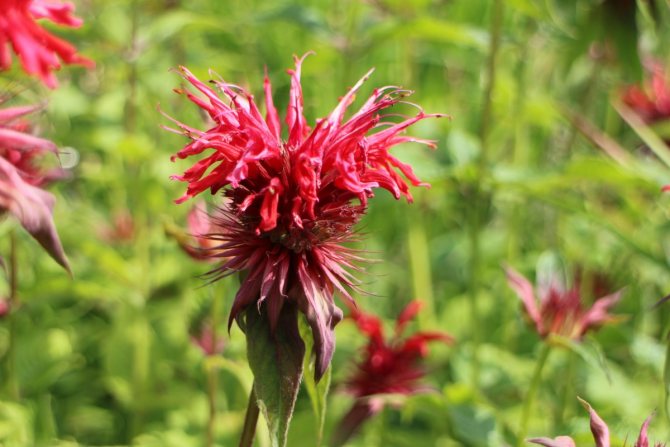

Double (a common flower grows in the wild in the vastness of North America and in the wooded areas of Europe and Asia).- Fisty (has a pronounced citrus smell, refers to valuable plants that are used to treat various types of diseases).
- Lemon (smells like lemon and has the same properties as yellow citrus).
- Dwarf (leaves and flowers of this species have a tart taste, are used in cooking as a spice or spice).
Composition and calorie content
The calorie content of the herb per 100 grams is close to zero. Its protein and fat content is also minimal. Monarda oil contains about 900 kcal per 100 grams, there are practically no proteins and fats.
Monarda contains a high concentration of essential oils. They have bactericidal properties, relieve inflammation and spasms, strengthen the immune system, and support the nervous system.
Vitamins C, B1 and B2 in combination with flavonoids in the composition of monarda help the body fight poisoning, strengthen and stimulate the cardiovascular system. Other substances that also help the heart and blood vessels work are anthocyanins. These pigments help remove excess moisture from the cells of the body, strengthen blood vessels and help prevent bouts of hypertension.
Method for making spices
Eating monarda spices is one of the many uses for this herb.
To make spices from this plant, you need:
- Collect the monarda during flowering. It was at this time that it contained the maximum content of essential oil.
- Cut off the stems no shorter than 25 cm from the soil.
- Dry and grind.
- You need to store it, like other spices, in a tightly closed dry container.
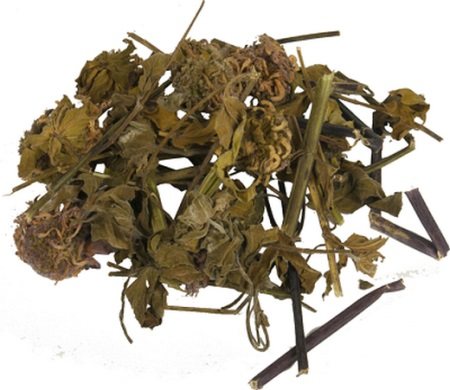

Benefits of bergamot herb
General benefit
The main use of the bergamot herb is to add to food, as well as to treat and prevent various diseases. The benefits of the plant are difficult to overestimate:
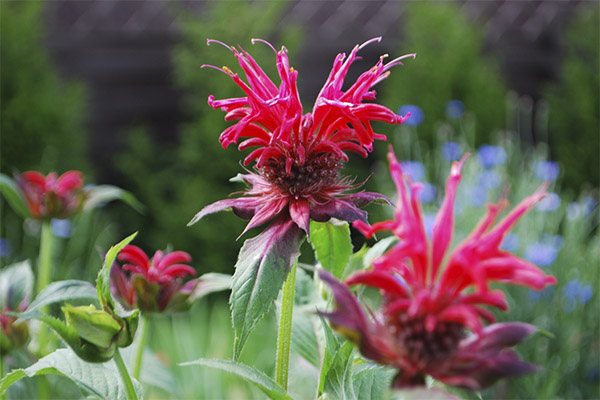

- Hemostatic and regenerative properties are used for wound healing.
- Antifungal and antimicrobial properties are used in complex therapy for colds, flu, recovery after complex operations.
- The immunostimulating effect makes it easier to carry diseases and not get infected during periods of epidemics of seasonal viral diseases.
- Disinfecting and analgesic properties are known and widely used in dentistry: rinsing with broth or chewing fresh leaves has a mild analgesic effect, helps with stomatitis, periodontitis and other diseases of the teeth and oral cavity.
- Monarda tinctures in combination with an abdominal massage with bergamot oil help fight parasites and effectively eliminate them. To enhance the effect, you can add pumpkin seeds to the products.
For women
Due to the fact that the monard contains substances that stimulate the production of pain-relieving hormones, women can use its infusion to reduce cramps during painful menstruation.
Monarda contains flavonoids, which are structurally similar to female sex hormones. During menopause and before it, the use of infusions, the addition of oils with monarda helps to reduce the concentration of lipids in the blood, strengthen the cardiovascular system.
For men
A scientific study conducted on 1,500 men has proven that regular consumption of flavonoids, which are rich in bergamot herb, can reduce the risk of severe prostate cancer by 30%.
With age, many men are at risk of cardiovascular disease. Monarda oil, which restores the metabolism of fats in cells, reduces harmful cholesterol, prevents the formation of blood clots, and helps to cleanse the walls of blood vessels.
During pregnancy
The production of hormones stimulated by the infusions and oils of monarda can adversely affect the health of the mother and fetus. The use of bergamot herb for food, as well as its use for cosmetic and medicinal purposes during pregnancy, should be limited due to the insufficiently studied mechanism of its effect and possible negative consequences.
Video:
what herbs ruin the fetus during pregnancy Expand
When breastfeeding
The flavonoids in monarda make the use of bergamot herb during feeding undesirable. However, we are talking about the regular use of infusions, oils, tea. Adding a spicy herb to hot meals, a massage with aromatic oil, or using a dried herb sachet will not negatively affect the mother and baby, provided there is no allergy.
For kids
Due to the presence in the composition of potent essential oils, decoctions of monarda are not recommended for children under three years old. Then you should try to give children infusions from the herb-bergamot with great care, as they can cause severe allergies. Up to six years, the use of monarda oil in solutions for oral administration or for external use should be avoided.
When losing weight
Decoctions and oil help the body to assimilate food, have a positive effect on the digestion processes. Monarda oil stimulates the liver and gallbladder, as well as digestion. The quality of metabolic processes in the body is the key to success in the fight against obesity, therefore, taking into account the limitations, products from the herb-bergamot can complement the diet while losing weight.
Bergamot - a kind of orange
The name of the plant in Italian sounds like "bergamotto". This word comes from the name of the city of Bergamo, where it is grown. The most common opinion is that this species of the Rutaceae family was bred by breeders in ancient China, however, there is a version that the plant turned out during a natural mutation.
Description of the plant
Citrus is an evergreen tree with an average height of 3-5 m. The plant is afraid of frost, therefore it grows in the subtropics. The branches of the tree have thin elongated thorns. The leaves are shiny, deep green. The tree blooms in early spring with large flowers, spreading a rich pleasant aroma. What is a flowering bergamot tree is clearly demonstrated in the photo below.
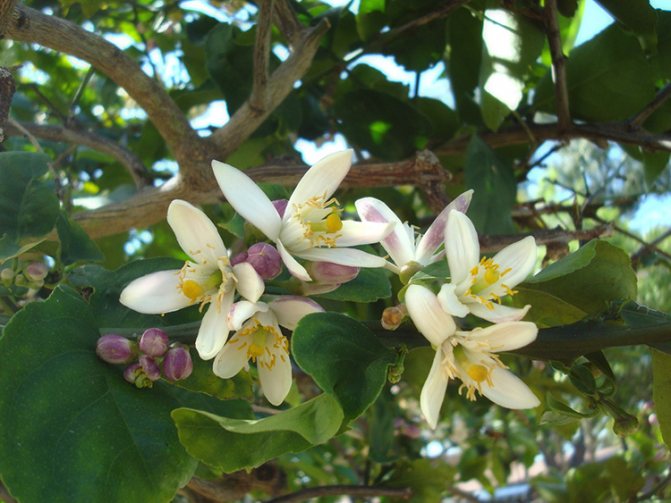

Flowers come in white and purple hues
The fruit is the most valuable part of the citrus tree in terms of the content of essential oils. They are of different sizes, they are spherical or pear-shaped. In cut, the fruit is similar to lime or lemon.
INTERESTING FACT!
(click to find out)
INTERESTING FACT!
The fruits are rarely eaten in their pure form, as they have a specific bitter taste, too thick peel and dryish pulp structure.
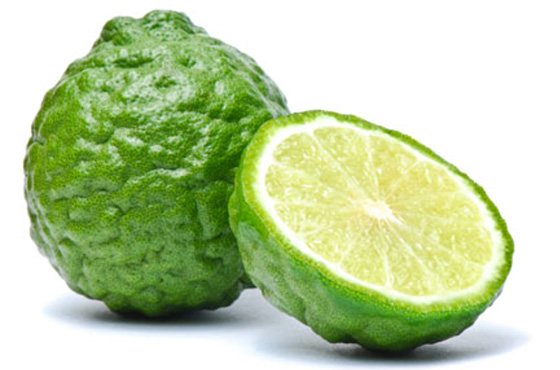

Photo of bergamot fruits confirms the above.
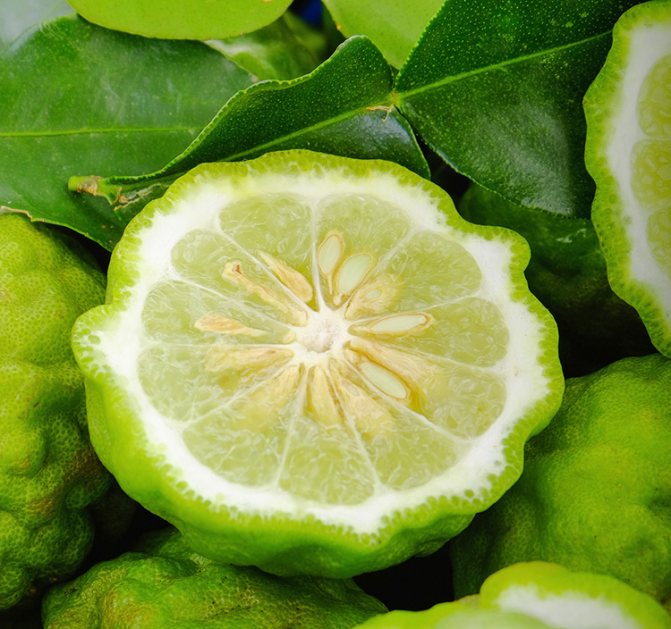

Jam and various flavors are made from fruits
What does bergamot look like? Photos of plants and fruits
Residents of the Italian province of Calabria, where bergamot grows and is cultivated in large volumes, consider this plant to be their symbol. Today the crop is grown in some countries in South America and the Mediterranean.
Growing a plant at home
How to grow bergamot at home? You can plant a plant with seeds extracted from the fruit, by analogy with oranges and tangerines.
HELPFUL ADVICE!
(click to find out)
HELPFUL ADVICE!
The seed should not be dried out, as this can reduce its germination.
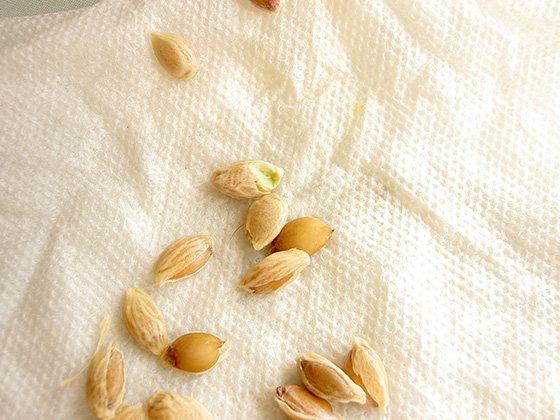

For planting, packaged soil for citrus fruits or a soil mixture of sand and humus is suitable. The seed is immersed in moistened soil to a depth of 1 cm. The plant should be watered as the soil dries out. The sprouts appear in about a month. They can be planted after the formation of 3 leaves on the stalk.
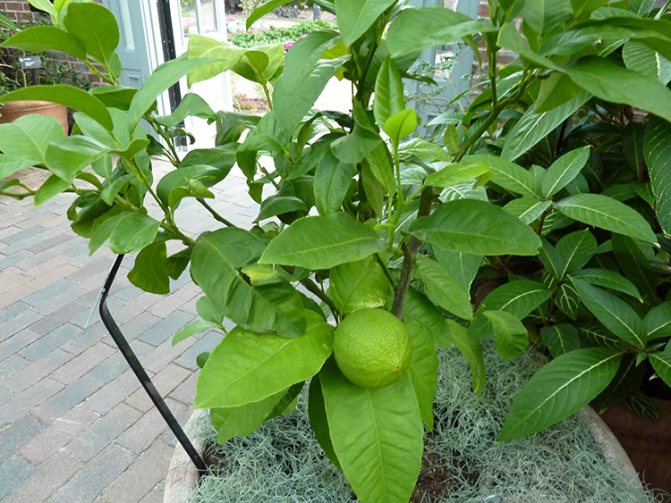

Homemade citrus bears abundant fruit when optimal growing conditions are created
The plant requires a lot of light and moisture, so it is better to keep it on the south side, watered with clean warm water and sprayed.
Why is bergamot tea useful?
Tea brewed from fresh or dried monarda is recommended to be drunk before meals, in this case it stimulates appetite and warms. Drinking tea after meals shortly before bed has a relaxing and calming effect.
Tea recipe:
- Pour one tablespoon of fresh or dried leaves with one glass of boiled water.
- Infuse the tea for about 10 minutes.
You can add monarda to herbal teas with chamomile, willow tea and other ingredients.
Bergamot - a variety of pear
Bergamot is a fairly common pear variety in Russia, which has several varieties of different ripening periods. Fruits of southern varieties are sweeter and more juicy. The varieties grown in the middle lane are cold-resistant with strong medium-sized fruits. As shown in the photo, bergamot pear bears fruit abundantly with proper care.
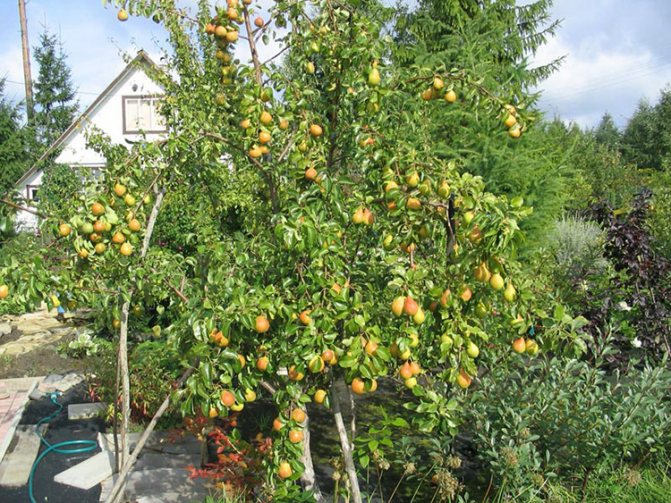

Up to 200 kg of fruits can be harvested from one fruit tree
The tree is characterized as medium-sized, however, some species reach 25 m in height. The crown is dense, spreading. The tree is moisture-loving, therefore it requires frequent watering, especially in the hot season. Pear Bergamot is a long-liver, but it bears the first fruits only 7-9 years after planting.
Monarda oil: properties and applications
Due to the fact that monarda oil is obtained from different types of plants, color, aroma and beneficial properties may vary. All of its types are quite light, are quickly absorbed and are colored orange. The most common oil from fisty monarda has a scent with notes of rose, thyme, geranium and sage. Lemon monarda has the strongest citrus scent. Before using aromatherapy oil, you should first do a cold inhalation, make sure that there are no unwanted reactions, and only then begin regular sessions.
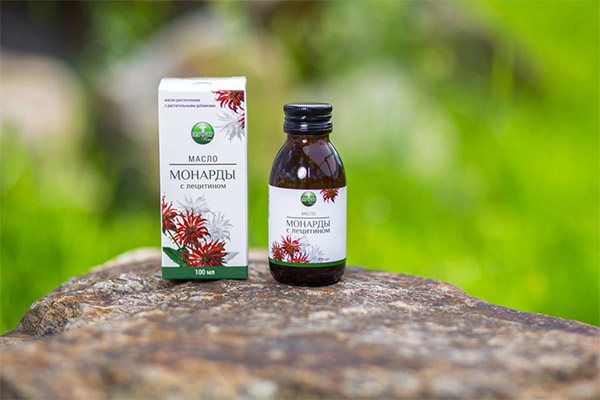

Bergamot herb oil is potent and is rarely used in combination with other oils. However, its combination with eucalyptus oil enhances the antiviral and bactericidal effect. The addition of basil to it adds to the effectiveness of the healing properties. Other oils you can mix Monarda oil with are lemon, lime, geranium, almond, apricot, or peach.
The aroma of monarda oil stimulates the nervous system and helps to fight fatigue, invigorates. It helps to overcome troubles, supports when changing climate or time zones, during times of stress. Inhalation of its vapors increases performance.
It promotes recovery from asthma, burns, infectious diseases. Its bactericidal properties help fight viruses and fungal pathogens. Among the diseases for which the use of monarda oil is recommended, pneumonia and bronchitis, otitis media and even tuberculosis are listed.
Monarda oil has a diuretic and diaphoretic effect, so infusions of aromatic herbs help to remove excess moisture from the body with cystitis, and, along with excess fluid, get rid of toxins and other harmful substances.Not only folk, but also official evidence-based medicine recommends remedies with a monard for urinary infections and inflammatory processes.
Monarda oil is considered especially useful in old age, as it can ease the course of atherosclerosis, reduce the manifestation of anemia and oxygen deficiency.
The only known oil that can protect against radiation is monarda ether. Of course, the doses of radiation exposure should not be large, but the protective effect and benefits from application after irradiation have been proven in practice.
The highest concentration of nutrients is present in oil obtained by industrial steam distillation. However, at home, you can also prepare a product for compresses, inhalation and massage. To do this, dry grass must be added to refined vegetable oil in a ratio of 1:10. Then heat the oil for 2.5 hours at a temperature of about 60 degrees Celsius. At the end of cooking, cool the mixture, filter and pour into storage containers.
We advise you to read:
hyssop oil: properties and uses
To read
Plant features
Despite the fact that the presented grass is annual, it grows very quickly, reaching almost a meter in height. If you grind the young leaves, they will smell like lemon. But if you crush old leaves, then the aroma will already resemble oregano.
Outwardly, the spice is not particularly remarkable, since it is an ordinary, not too dense bush. In the middle, several stems are beaten off from it, having green leaves, the length of which rarely exceeds 8 cm. Their distinctive feature is called an oval shape with a sharp tip. Bushes and gardeners-aesthetes delight, as they bloom with white, purple, pink flowers.
Because of its similarity to bergamot and other herbs with a similar scent, Monarda is sometimes referred to as the American version of lemon balm or simply lemon mint. This is also explained by the fact that the plant belongs, according to the botanical classification, to the mint family.
In literal translation, the name of the spice stands for "citrus aroma". During flowering, it attracts not only butterflies, but also bees that flock to the wonderful smell. The historical homeland of greenery is usually called Mexico and America. And in California, you can find it right next to roadways. The ideal habitat is clay soils.
Application in traditional medicine
In the scientific literature, it is mentioned that the Indians of North America used boiled monarda, they cooked stems with leaves with various seasonings or added them to meat dishes. Also, the antiseptic properties of monarda were known to the indigenous peoples of America. Fresh leaves were applied to the wounds to speed up their healing. Compresses with fresh leaves or infusion of flowers and leaves are also believed to be helpful in healing injuries and burns, dermatitis, and other skin problems.
Infusions of monarda are successfully used to treat colds, coughs and other respiratory diseases. It is not difficult to prepare a medicinal drink: pour a few tablespoons of dry leaves and flowers with boiling water, cover and leave for 40 minutes. Also in folk medicine, inhalation, inhalation of a decoction or vapor of water with monarda oil was often used to treat bronchitis and other respiratory diseases.
Foot baths with sea salt and monarda decoction help in the fight against fungus, reduce sweating of the feet and get rid of unpleasant odors.
Rinsing the mouth with this infusion helped the indigenous people of North America to relieve pain and reduce inflammation.
Double monard
Double monarda is, as they say, two in one: a very cute flower and a very useful plant. It is no secret that herbal tea, prepared on the basis of monarda double, has antipyretic and analgesic properties, especially for pain in the gastrointestinal tract.This is probably why such an uncomplicated culture has gained unprecedented popularity among amateur gardeners.
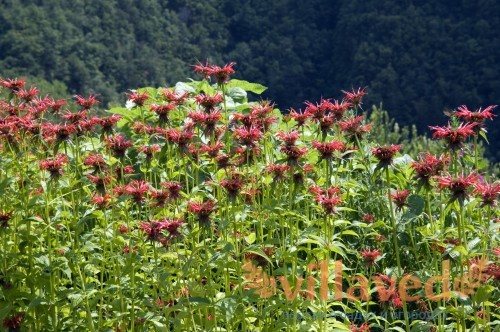

Previously, other names were better known: Virginian soul and Canadian origan. And only now the monard was named that way. The monarda received its name in honor of the doctor and botanist of the Spaniard Nicholas Monardes, who was the very first to register it officially when compiling a catalog of the most useful American plants. It is popularly called monarda bergamot, mountain balsam, American lemon balm and Indian feather.
This flower came to us from North America. Double monarda is a meter tall perennial with an elongated, spreading root and tetrahedral shoots, clothed in many hairs. The leaves of this flower grow opposite each other on short cuttings with outgrowths of a red hue. The size is about six to twelve centimeters. The shape of the leaves is round with slight serrations at the edges. The inflorescences for this plant are small, purple or lilac. This flower also has fruits - dry, after ripening they disintegrate into 4 small nuts.
The genus monarda includes over twenty different species, most of which grow in Canada, Mexico or North America. These flowers can be both short-lived and perennial, both even and spreading. The highest growth possible for the monarda clan is one and a half meters. There is more variety in the shades of the inflorescences: the flowers can be white, pinkish, purple or yellow. The fruit is always a nut. Monarda is characterized by a delicate, aromatic scent reminiscent of citruses and mint (the specific aroma depends on the species).
Today this plant is quite popular. Double monarda, for example, is used for various purposes: from decorative (decoration of the site) to culinary (as a spice). Do not forget about the medicinal properties. For example, it is used to combat SARS or to lower the temperature. The most famous varieties: lemon monard, fragrant, double, dotted, red, Russell and others.
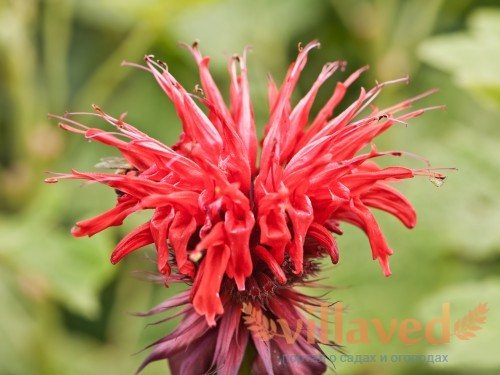

Monarda double is considered the tallest and most famous variety among the entire family. Bright pointed flower caps can be of several shades - from classic red to snow-white. All the brilliance of this plant is demonstrated by the photo of the double monarda.
Related article: Andromeda multifoliate - useful properties, description
Monarda fisty. It is appreciated for its essential oils and a high content of thymol - a substance that is actively used to create all kinds of medicines used in medicine and beekeeping, as well as perfume and cosmetics.
Monarda lemon is a very interesting specimen for gardeners, since it is used not only to decorate the suburban area due to the amazing flowers of a heavenly hue, but also as a spice that can give a special flavor to vegetable dishes. By the way, there is a similar oil in the leaves of basil, mint, dill and other herbs.
A mixture of Panorama - beautiful fragrant flowers create a wonderful decorative effect. Cut flowers of this variety do not fade in a vase for a long time.
Monarda oil in cosmetology
Monarda oil has such a powerful wound healing and antiseptic effect that it is used not only for medical purposes. In cosmetology, decoctions and infusions of herb-bergamot leaves are most often used for the prevention of problems and general skin and hair care.
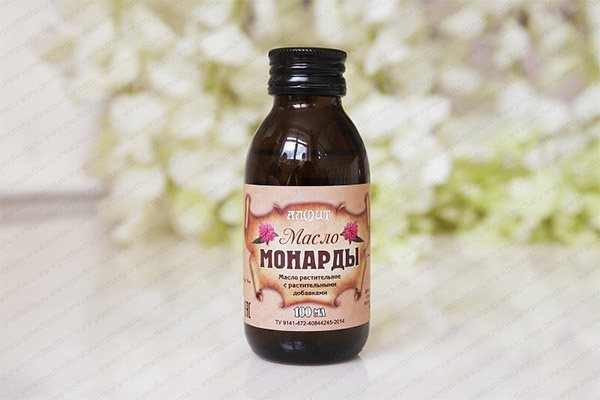

Monarda oil is used for cosmetic purposes only in combination with other vegetable oils in a minimum concentration.
For example, oil for body and face massage can be prepared from base vegetable oil with the addition of 2-3 drops of monarda oil. You can add 1-2 drops of other essential oils, such as rose oil, to this mixture.Massage with monarda oil with tea tree, lavender and grape seed ether relieves nervous tension and perfectly relaxes.
A few drops of bergamot herb oil as part of a complex cosmetic product can be added to the bath for a warming and relaxing effect.
For face
The substances in monarda oil work well on skin prone to oily and acne. Also, its benefits are proven for aging skin, to combat wrinkles and restore elasticity. Regular massage with a complex of oils with monarda supports aging skin and slows down the aging process.
The addition of Monarda oil to the moisturizer helps to reduce breakouts, prevent new acne breakouts, even out the complexion, and make the skin more elastic.
Cream with the addition of monarda is also useful after prolonged exposure to the sun in the summer, chapping and hypothermia in the cold season. The properties of monarda help the face to recover faster after exposure to extreme conditions.
Face masks help to deeply cleanse the skin, reduce rashes. One of the simple recipes:
- Pour 2-3 tablespoons of dried monarda leaves with 300 ml of hot water and leave for 10-12 hours.
- Combine the infusion with blue cosmetic clay and mix thoroughly.
- Add olive or other moisturizing oils to the mask, which will help enhance and complement the effect of the cosmetic product.
- Apply the mask for 15–20 minutes and then rinse thoroughly, removing all residues of the product. In case of itching, burning or other unpleasant sensations, wash off the mask with monarda immediately.
To achieve a high-quality result, such masks should be applied 1-2 times a week for a month. The beauty treatment mix can be stored in the refrigerator, but it should be warmed up to room temperature before use.
1-2 drops of cosmetic (diluted with another) monarda oil, added to a toner or lotion, will help narrow pores and enhance the cleansing effect of the cosmetic.
For hair
For the treatment of seborrheic dermatitis and other diseases of the scalp, the use of monard oil is recommended. In order to strengthen the hair, give it shine and volume, use less concentrated products made from the herb-bergamot. The raw materials are simply brewed (2 tablespoons per 0.5 l of water) and the hair is washed with the broth after shampooing.
Combined with several other oils, such as olive oil, you can make a mask that can help get rid of dandruff and reduce hair loss.
Procedures with gruel from the leaves and flowers of monarda or its oil should be limited in time; after half an hour, the hair should be thoroughly rinsed.
Using
Monarda double can be safely called a cure for seven diseases, it is not for nothing that it is actively used as a means of traditional medicine. If you take a closer look at the composition of the plant, everything will become clear. The healing properties are due to the high content of vitamins C, B1, B2 and useful essential oils, which perfectly relieve the symptoms of colds, help heal eczema, and wounds, in principle, fight dandruff (decoction for rinsing) and even treat bronchitis and asthma.
Other problems where using a monard will give good results:
- Inflammatory processes on the mucous membranes of the oral cavity.
- As a solution for gargling with sore throat.
- To reduce inflammation in acne, teenage acne and a variety of bacterial skin diseases, even foot fungus.
- Drinking for food poisoning, dehydration.
We will not remind you of the use in everyday life. Decorative varieties of monarda are known for their original beauty, and in cooking it is an irreplaceable seasoning for all kinds of soups, meat dishes, salads and canned food.If we talk about other purposes of using monarda, then it can save you the hassle of mold and mildew in the room. For treatment, it is necessary to spray the affected surface with an aqueous solution with Monarda oils every seven days. Fifteen drops of ether are required per liter of water, and soon your problem will be fixed.
The use of monarda in cooking
The stems, leaves and flowers are used to make a spicy seasoning. The use of bergamot herb in cooking is very wide:
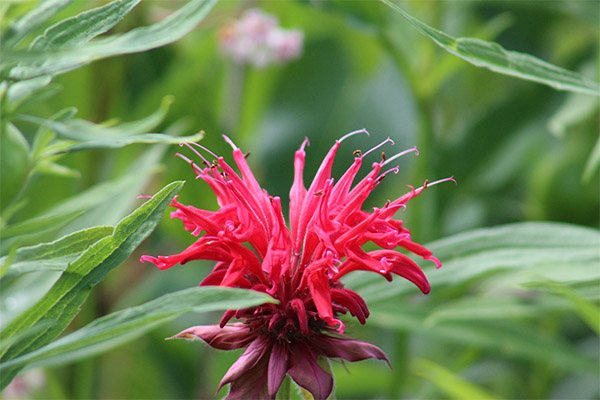

- Dried leaves can be added to meat and fish dishes, as well as pizza and pasta. It is important to add the seasoning a few minutes before you finish cooking to preserve the herb's beneficial properties and flavor.
- Fresh leaves are used to decorate fruit and vegetable salads.
- A traditional spring salad of radishes, green onions and eggs, with the addition of a few leaves of the herb-bergamot, gets a new sound, enriched with lemon aroma and spicy taste.
- Monarda greens perfectly complement a salad of tomatoes, cucumbers, bell peppers, feta cheese and olives. Dressing the salad with lemon juice and a little garlic makes it low in calories, filling and very healthy.
- Fresh monarda leaves can be used in pesto sauce instead of or with oregano herb.
- Dessert jelly with the addition of bergamot greens turns out to be aromatic and enhances the taste of the fruit. Compotes, preserves, jelly, fruit drink also acquire a mint-citrus aroma when the herb-bergamot is added.
- Apple jam with monarda: for cooking, you need 3 liters of sugar syrup, 5 medium-sized green apples and 10 grams of bergamot herb leaves. Finely chop the greens, place in boiling syrup and simmer for about 10 minutes. Then add the diced apples and cook until tender.
- Compote with monarda: half a glass of gooseberries, half a glass of red currants, 10 grams of bergamot herb, 5 grams of basil should be boiled in boiling water to soften. Then grind the mixture, strain and cook for a few more minutes with the addition of sugar (3-5 tablespoons).
- Fresh herbs added to tea or lemonade can replace mint and give drinks a fresh, spicy flavor.
- Monarda leaves can be crushed, placed in ice molds with water and frozen. This will allow you to prepare drinks with fresh leaves of the bergamot herb all year round.
- Monarda is an excellent preservative, so it can be added when pickling and pickling cucumbers, cabbage, tomatoes. Spread the stems and inflorescences of dill, cherry and currant greens on the bottom of the jar, place the upper part of the stems with the leaves of the monarda up, under the lid. At the same time, the aroma and taste of the bergamot herb does not disappear and does not mix with other aromas, and the shelf life and quality of vegetables in the harvest are improved.
To prepare dishes from fresh raw materials, the leaves of the monarda must be thoroughly washed, insisted in cold water so that all debris and insects float up, and then shake off and dry.
Honey from fresh monarda flowers has many beneficial properties:
- Place the flowers of the monarda in a container with a volume of about 300 grams, filling the container by about a third.
- Pour honey over the flowers, while the container must be completely filled.
- Stir the mixture thoroughly to remove air.
- Close the jar tightly and leave for a month and a half in a cool dark place.
Honey, saturated with monarda flower oils, has a pleasant aroma and can also fight sore throat in case of colds.
Video:
what is monarda and what is it eaten with Expand
The sun
Can live in the shade, although not shade-loving. It is better to choose an open sunny area for her. The place should be inaccessible to strong winds: the stems of the monadra are not strong enough to withstand sudden gusts.
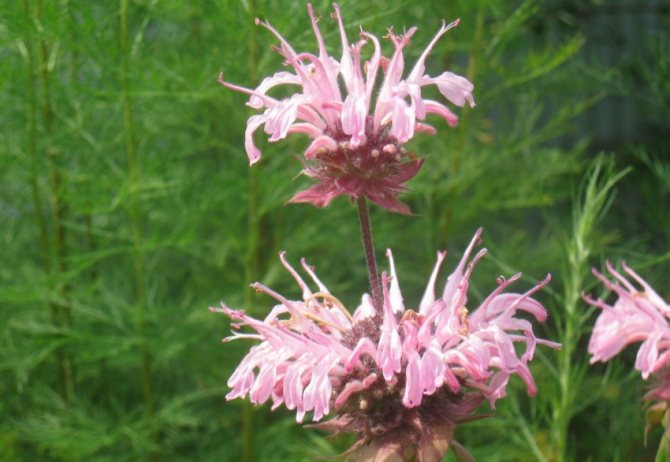

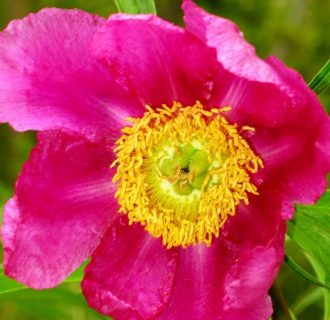

Maryin root: planting, care, cultivation, medicinal properties and features of the plant (140 photos)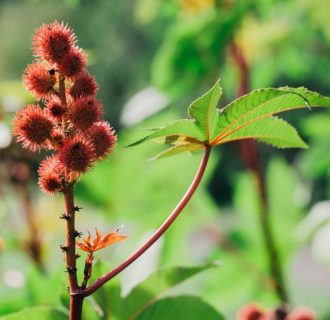

Castor oil plant: planting, growing, care and maintenance at home and in the open air (115 photos and videos)
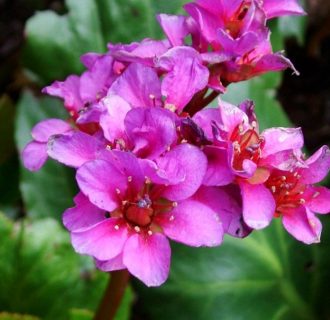

Badan - advice on the correct cultivation of a medicinal plant. Features of collection, use and contraindications (130 photos and videos of planting in the ground)
So completely shaded wet places should be avoided.
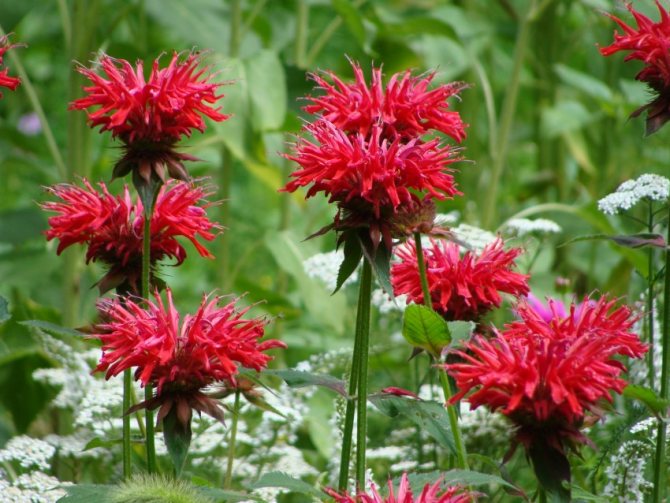

Harm and contraindications
Monarda oil is a potent substance, it intensively affects all body systems. Its use is possible only after consultation with a specialist and in many cases only after other, less intensive means have not helped to achieve the desired result. You should carefully study the dosage recommended by the manufacturer of the finished monarda oil. If medicines from bergamot herb are made independently, the concentration should not exceed 3-5 drops per 10 ml of the base for massage, applications or rinsing. Another way to soften the powerful remedy is to mix bergamot herb oil with other esters.
Like many plants that are rich in essential oils, monarda can cause an allergic reaction when taken internally or topically. A sensitivity test is recommended before first use for medicinal or cosmetic purposes.
For people with diagnosed hypertension, other pathologies of the cardiovascular system, peptic ulcer diseases of the gastrointestinal tract, it is not recommended to use decoctions of herb-bergamot. During the period of exacerbation of the disease and even during the period of remission, monarda can provoke a deterioration in health.
Due to the content of substances that stimulate the production of various hormones, it is not recommended to use Monarda for thyroid diseases and other problems with hormonal status.
Priming
In terms of soil, this plant is also unpretentious, it can live in stony and dry rocks. Landing in open ground is possible, care in it is quite easy. However, the most comfortable for this flower will be loosened limestone soil. Wet acidic soil will be the most inconvenient for existence.
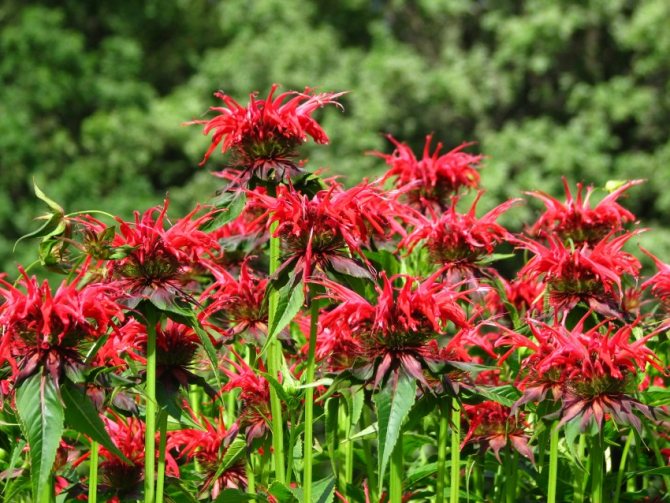

Small frosts up to minus 5 monard are not scary, even for young seedlings. But transfusion should be avoided. An excess of moisture leads to root rot.
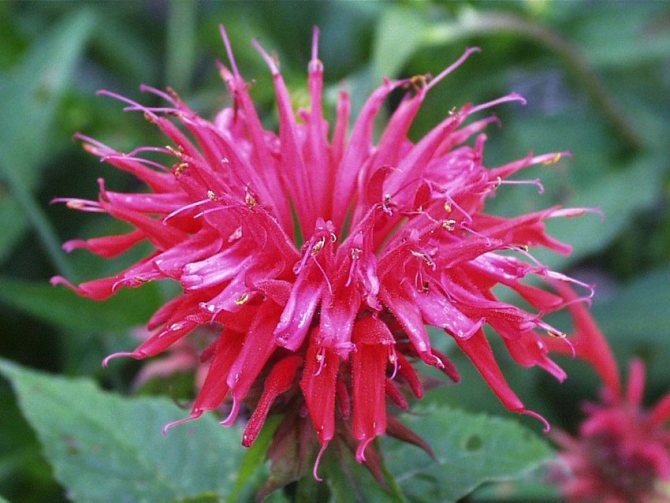

When to collect and how to dry
Monarda grows successfully in the middle zone of the European part of Russia and in other regions with a temperate climate. It is not demanding on lighting, watering, it tolerates frost well. However, in order for the plant to grow successfully for several years, it is necessary to fertilize the soil, remember that fragile stems can break in a strong wind, plant bushes at a distance of at least half a meter from each other.
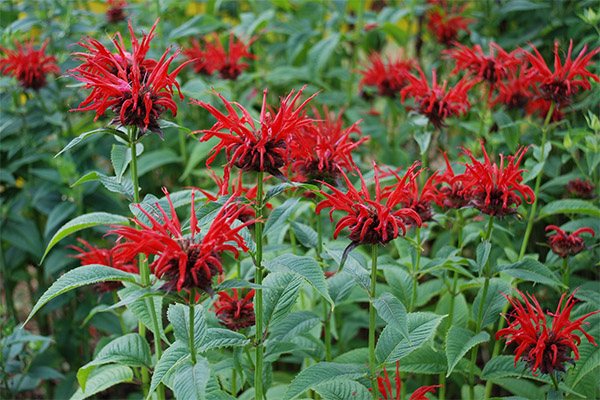

Monarda does not bloom in the first year of life. The highest concentration of essential oils in plants of the second year and older. It is better to plan the collection of herbs during the flowering period. The upper part of the plant should be cut off, about 20-30 cm from the soil surface. Drying leaves should not be damaged or stained. The collected branches are dried in a darkened room, then they are crushed and stored in a glass container, covered with a cloth or in a bag, which provides air access.
The aroma of dried herb is less than fresh, but the beneficial properties last for about a year. Before drying, you can separate the leaves from the stems, they contain a minimum of nutrients, and coarse fibers make them unsuitable for cooking.
In addition to drying, it is allowed to store monarda greens in frozen form. The leaves are separated from the stem, washed, dried to remove moisture and placed in a container in a freezer. Greens prepared in this way are not suitable for salads, but retain their aroma and can be used in meat dishes and soups.
Storage of monarda oil is allowed for three years or more due to the fact that it contains strong preservatives.
We advise you to read:
collection and storage of centaury
To read
Preparation for wintering
Perennial varieties of monarda calmly endure the winter. They are not afraid of frost down to -25 C °. After removing one-year-old plants from the site, you need to cover the site with spruce paws. Or you can mulch it with a thick layer.
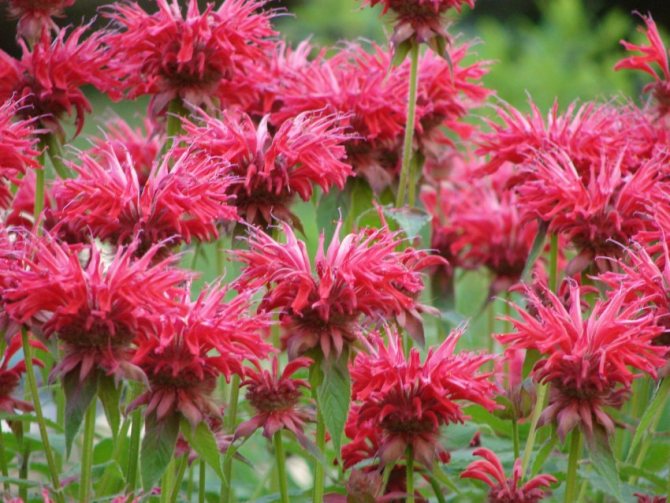

If there was a few-year-old monarda on the site, its remnants need to be uprooted and the soil prepared for the next season. This flower can be grown on the same plot for up to 7 years.
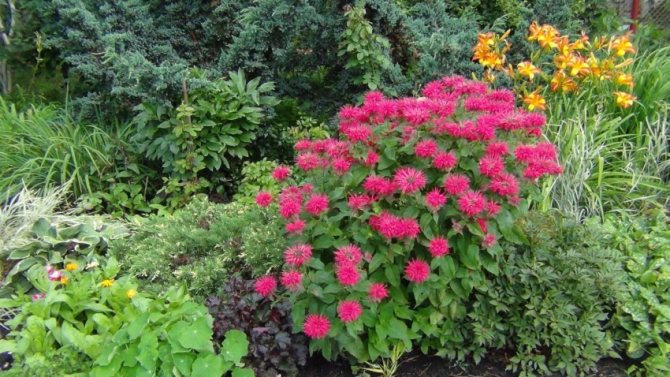

Medicines
Tribe Shakers have found it to be a useful substitute for black tea, and is also helpful in treating colds and sore throats. Other settlers soared the leaves and inhaled the fumes to clear their sinuses. Pregnant women should avoid bergamot as it can stimulate uterine contractions. However, in the 19th century, it was provided to young girls and young mothers as a tonic.
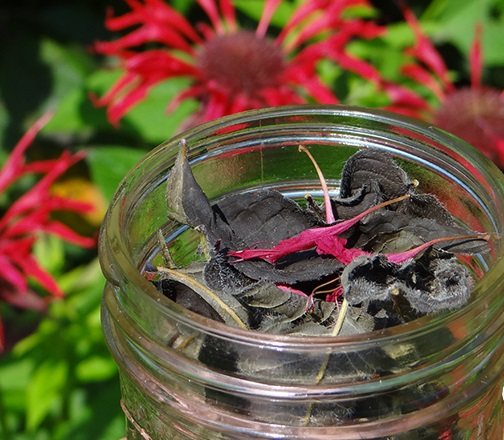

The Blackfett tribe recognized the herb's strong antiseptic properties. They used it to create a poultice to treat skin infections and small wounds. Tisan has been used to treat oral infections, dental problems, and gingivitis. Bergamot or Bee Balm is a natural source of thymol, an antiseptic, and today it is the main active ingredient in modern oral health care products. The Winnebago Indian tribe used it as a natural herbal stimulant, digestive herb. Other tribes used it to:
- increased urine flow;
- fight fever;
- for the prevention of heart disease;
- insomnia;
- to stimulate appetite;
- regulation of the menstrual cycle.
There are more flavonoids in the flowers than in the leaves, so they are a valuable part of the herb. In addition to the specific uses described above, bergamot has been used for nausea, vomiting, digestive complaints, colds and flu, coughs, as a decongestant, to clear sinuses, to relieve chest pain, as a diuretic, and to treat fungal and bacterial infections.
Further care
A young plant tolerates spring frosts well and does not need to be covered with a film. The rhizome of an adult monarda is able to withstand a significant drop in temperature.
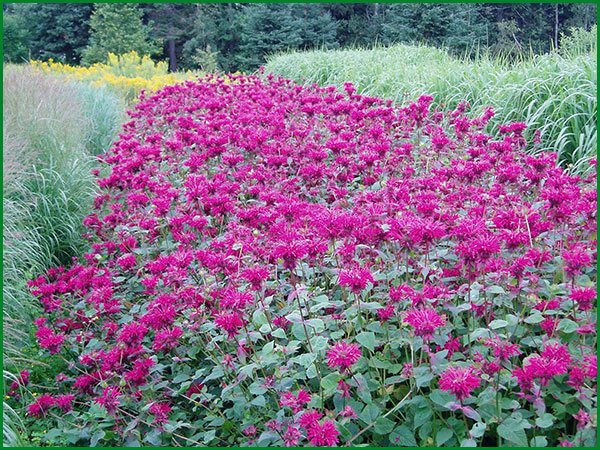

Monarda in landscape design
In order for golden lemon balm to bloom profusely and develop well, it must be constantly looked after. In a flower bed, you need to regularly loosen the soil and remove weeds.
Already at the age of three years, there are about 30 flowering shoots on the bush. So that the flower bed does not grow much, it must be periodically dug in around the perimeter.
Advice! The plant needs to be repotted periodically. If the monard is in one place for more than 6 years, the shrub begins to shrink.
It is necessary to water the shrub rarely, but abundantly. In the spring, the water for irrigation should be warm. When watering, the stream of water should be directed to the pubescent deciduous part of the bush located near the ground. Watering is best in the evening.
To retain moisture in the summer, it is necessary to mulch the soil in the flower garden using compost, humus or peat.
Those flowers that have already faded must be removed - this will allow new buds to appear.
Tall shrub varieties need additional support.
It is advisable to divide the bush every five years. If it is not thinned out, over time it will begin to wither, weaken and become susceptible to many diseases. It is best to do this in the spring, while the plant has not entered the active growth phase.
Residents of warm areas may not shelter the monarda for the winter. In the spring, it will be necessary to remove from the plant all the ground part left over from last year - this will activate the development of new greenery.
When growing horsemint in cooler climates, in late autumn, you will need to cut off its aerial part and cover the outlet with spruce branches or foliage.
For the treatment of many diseases, monarda is used, the beneficial properties of which were discovered several centuries ago. Shoots for this purpose must be harvested during flowering. After cutting off the shoots, the plant needs additional feeding and abundant watering.
The benefits of essential oil, infusion
Beneficial substances are found in all parts of the plant, including stems, leaves and flowers. They are used to prepare butter industrially. In the process of obtaining it, the flowers are processed by the method of steam distillation.
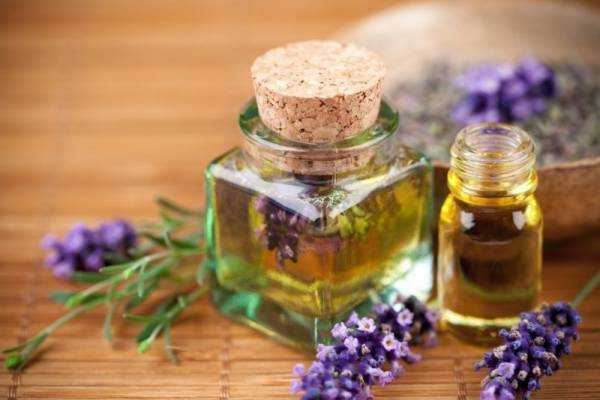

Monarda essential oil can be purchased ready-made at the pharmacy.
There are oils on sale made from different plant varieties:
- the ether of monarda fistus is the most common, has medicinal and antiseptic properties;
- lemon monarda oil - made from a variety with bright colors and a pronounced lemon aroma;
- essential oil of monarda point - it is also called horse mint;
- extract of mint-leaved monarda - is rarely used, since in an increased dosage it is toxic to humans.
What it is
Monarda is a very pretty plant with a wonderful fruity, mint aroma, on stems 90-100 cm long in the middle and late summer, magnificent flowers appear in the form of a crown of various colors, including red, pink and purple. In addition to its decorative qualities, the monarda is valued for its culinary and medicinal properties.
All aerial parts of the plant are edible and are used in cooking as a flavoring agent, additive in tea, and flowers decorate the finished dish.
What does a monarda look like - photo
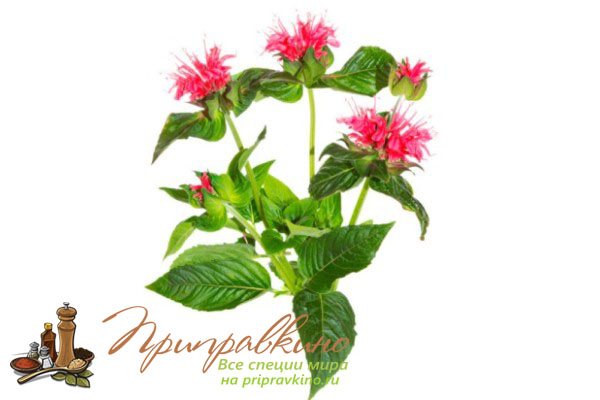

Tincture with monarda: indications for admission
It is quite easy to prepare a tincture with a monard at home.
This will require:
- dried leaves of monarda-5 tbsp;
- vodka 50 tbsp
Preparation:
- Put dry raw materials in a glass container, pour vodka.
- Close the container and put it in a dark place for 1 week.
- Strain the resulting tincture.
Tincture of a medicinal plant is also used for rubbing with pain in the muscles. As an anthelmintic agent, the tincture is used in an amount of 20 drops 3 times a day, dissolved in cold water. They take the medicine for 2 weeks.
Diseases and pests
It is a very strong and healthy plant, resistant to various kinds of lesions. In rare cases, with improper care, the bush can affect the following diseases:
| Disease | Cause | Signs | Remedies |
| Powdery mildew | Insect pests: aphids, thrips, scale insects, whiteflies, mealybugs. The presence of spores in the water for irrigation. Spread from infected specimens through the air, through contact with humans. High humidity 60-65%. Excess nitrogen. Close planting of bushes. | Powdery spots on the aerial part, giving off a liquid like dew. Stopping development. Early fall of petals. | Stop applying fertilizers with nitrogen, replace them with phosphorus, potassium. Treat with Bordeaux liquid 1%, Alletta or Acrobat preparations. |
| Rust | Infection from plant residues. Airborne spores from diseased bushes. | Formation of red pustules on the leaves. When cracked, an orange-colored powder is visible. Cessation of growth. Early yellowing and dying off of greenery. | Destroy fallen leaves and other dead parts outside the site. Weed the weeds. Treat colloidal sulfur with Abiga-Peak, Cumulus, Poliram, Strobi fungicides. |
Healing properties
The oil of this culture has bactericidal, anthelmintic, antibiotic activity. The antianemic, antistress and radioprotective properties of the plant are well known. Monarda has a beneficial effect on the nervous system, improves tone, restores strength. It is used for burns and eczema, asthma, salmonellosis. The plant is effective in the fight against helminths, and it was also noticed that it helps to get rid of domestic parasites (bedbugs, etc.).
For medicinal purposes, monarda is used for skin diseases, problems of the nervous system, diseases of the gastrointestinal tract and gynecological diseases. Fresh plant is successfully used in homeopathy, cooking.
Monarda essential oil is used in aromatherapy. The medicinal properties of this plant were also appreciated by official medicine. Monarda is present in a number of drugs.
In cosmetology, the plant is used in anti-aging creams and skin care products. Effectively treats seborrhea, teenage acne, foot fungus, acne. In herbal medicine, monarda is used in the form of tinctures, decoctions, tea drinks, extracts.
Contraindications for admission
Monarda (medicinal properties and contraindications to the use of which are associated with the presence of quarkol, thymol and cymene in the plant) can cause individual intolerance in some people, manifested in the form of allergic edema and rashes on the body.
You can not use monarda as a plant with a large amount of thymol for the following categories of people:
- having high blood pressure;
- suffering from inflammation of the kidneys, liver and gastrointestinal tract;
- pregnant women and nursing mothers;
- children under 5 years old.
Healthy recipes
In cooking, the herb is most often used dry. It is added as an ingredient for pickles and preservation, used in the form of greens for salads, added to teas. To prepare a hot drink, you need to grind the inflorescences and leaves of the plant, add lemon and mint, pour boiling water and let it brew for about 20 minutes.
Monarda can be used as a dressing for first courses. For this, leaves, stems and even plant inflorescences are suitable. You can also use the flower dry.
The plant will fit well in a light salad recipe. For example, spring salad: lemon mint branches with leaves, green onions, sour cream, boiled eggs, monarda leaves. The ingredients are crushed and mixed together. Monarda, along with green onions, is sprinkled on top.
In summer, buttermilk cocktail is a healthy and delicious cocktail. To do this, dilute 4 cups buttermilk with one glass of water, add a tablespoon of chopped herbs, or add vanillin to taste. Shake the contents and refrigerate for 20 minutes.
Advice: you can also use the plant on the farm. Add the monarda flower to the pantry where you store the vegetables. This will help keep the content longer. A dry flower is recommended to set fire to and fumigate the trees in the garden. This will get rid of the aphids. The herb navar is used as a spraying of the vegetable garden and killing parasites.
Medical applications - simple recipes
- from foot fungus - apply plant oil to a cotton swab and apply a compress in the affected area. Wash off after an hour;
- for wound healing - pour 100 g of chopped grass with boiling water, let it brew, strain. Lubricate the area around the wounds with fluid. The boiled gruel should not be thrown away, it can be applied to a bandage and applied to the wound;
- to relieve stress - pour a tablespoon of herbs with a glass of boiling water, let it brew, take a spoonful before meals;
- for colds - pour boiling water over the crushed flowers and leaves of the plant and inhale;
- for problem skin - dilute 15 drops of oil in 500 mg of warm water and wipe your face.
Areas of application of the flower
The spheres of application of monarda and the oil prepared on its basis are quite diverse: from the preparation of sweet pastries to the preservation of homemade preparations, from the treatment of eczema and skin lesions to the preparation of antipyretic infusions.
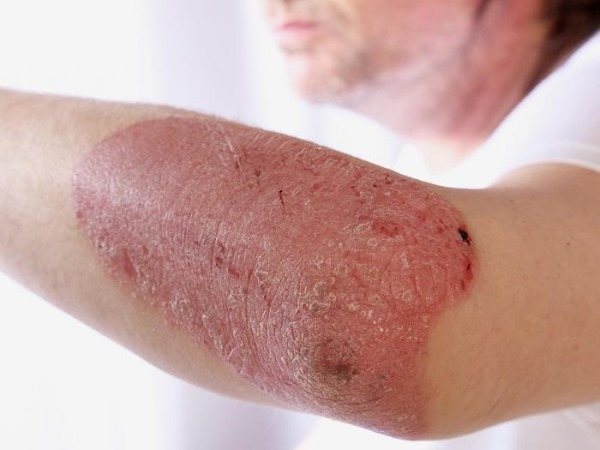

They use oil from monarda to disinfect indoor air and even to scare away mosquitoes and midges and get rid of plants from aphids.

